Кріс Grinter, 25 липня, 2011 В цей понеділок я відступу від звичайної Arctiinae щось зовсім інше – microlep! Це Nepticulidae, Stigmella diffasciae, і він вимірює в на колосальні 6 мм. Я не можу взяти кредит на поширенні цієї молі – all of the nepticulids I have photographed are from the California Academy of Sciences and spread by Dave Wagner while he was here for a postdoctorate position.
The caterpillars mine the upper-side of the leaves of Ceanothus and are known only from the foothills of the Sierra Nevada in California. If you’re so inclined the revision of the North American species of the genus is freely available here (.PDF).
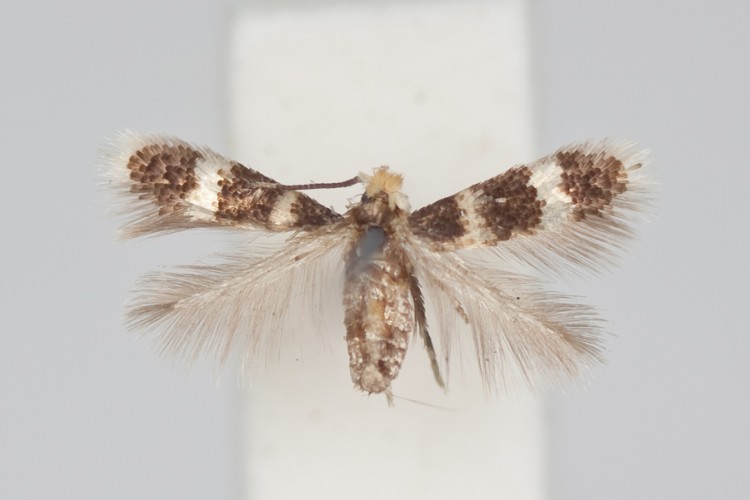 Stigmella diffasciae (Nepticulidae)
Кріс Grinter, 22 липня, 2011 Це було деякий час з моменту останнього GOP виклик, але this is a softball. Я сподіваюся, що вони були просто занадто ледачий, щоб знайти більш підходяще зображення…

Кріс Grinter, 19 липня, 2011 Що б зробив Ісус, якщо він мав деякий вільний час – можливо вилікувати хворобу, край війні,, або нагодувати голодуючих – але нах, кожен бачить, що йде. Чому б не шокувати їх в ядро – спалити ваше обличчя на отримання Walmart! Принаймні, that’s what a couple in South Carolina believe to have found, a Walmart receipt with Jesus’s face on it. This isn’t exactly new or exciting, humans have a wonderful ability to recognize a face in just about anything. Jesus and other characters “appear” on random things all the time, and even in 2005 a shrine was built to the Virgin Mary around a water stain in a Chicago underpass.
Pareidolia anyone? Насправді, that face looks pretty convincing, I’m not too sure this wasn’t just faked or “enhanced”. The closeups even look like there are fingerprints all over it. Since I don’t have a walmart anywhere near me or a walmart receipt on hand I can’t determine how sensitive the paper is and how easy it would have been to do – but how long do you think before it shows up on ebay? У будь-якому випадку, it looks much more like James Randi to me than Jesus (at least we actually know what Randi looks like!).
 from CNN
Кріс Grinter, 18 липня, 2011 Над на членистоногих, співробітник SFS блогер Майкл Бок поділився образ його поля приятелем, Plugg зелений квакш. My first thought was of a similar tree frog that haunted welcomed me everywhere I went in Santa Rosa National Park, Коста-Ріка. Зайве говорити, Costa Rica instills a sudden habit of double checking everything you are about to do. This species is known as the milk frog (Phrynohyas venulosa) for their copious amounts of milky white toxic secretions. One of the first stories Dan Janzen told me while while I was with him at Santa Rosa was about this species – and accidentally rubbing his eye after holding it. Thankfully the blindness and burning was only temporary.
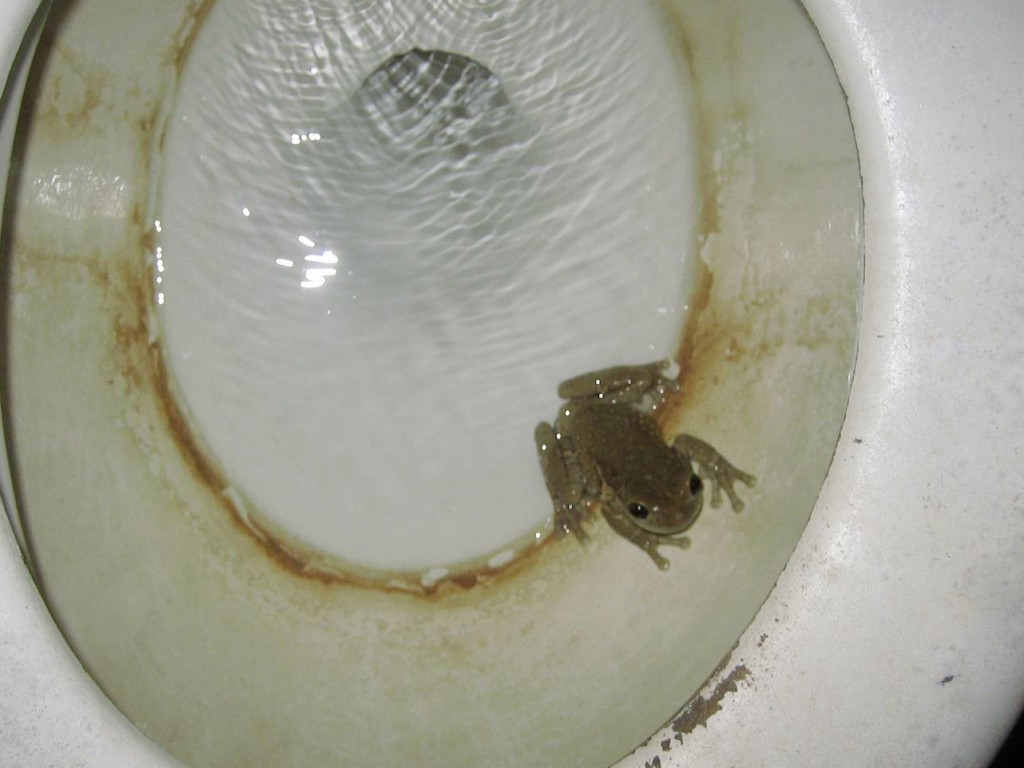 Milk Frog: Phrynohyas venulosa
Кріс Grinter, 18 липня, 2011 I’ll keep the ball rolling with Arctiinae and post a photo today of Ctenucha brunnea. Це молі можуть бути загальними у високих трав вздовж пляжів з Сан-Франциско в Лос-Анджелес – хоча в останні десятиліття чисельність цієї метелики знижуються з руйнуванням середовища проживання і вторгнення в пляжному траві (Ammophila Кузіна). But anywhere there are stands of giant ryegrass (Leymus condensatus) you should find dozens of these moths flying in the heat of the day or nectaring on toyon.
 Ctenucha brunnea (Erebidae: Arctiinae)
Кріс Grinter, 12 липня, 2011 Ну, як ви вже здогадалися предметом не так шокує, як мій титул припускає, але я не міг допомогти, але обертатися зі статті Гардіан. Я дійсно знаходжу це веселим, коли я стикався ні з чим, що говорить вчені “здивований”, “збитий з пантелику”, “шокований”, “спантеличений”, – Я припускаю, що це тема для іншого часу… Тим не менш дійсно cool butterfly has emerged at the “Sensational Butterflies” exhibit at the British Museum in London – a bilateral gynandromorph! The Guardian reports today that this specimen of Papilio memnon just emerged and is beginning to draw small crowds of visitors. I know I’d love to see one of these alive again – although the zoo situation would take away quite a bit of the excitement. I think the only thing more exciting than seeing one of these live in the field would be to net one myself!
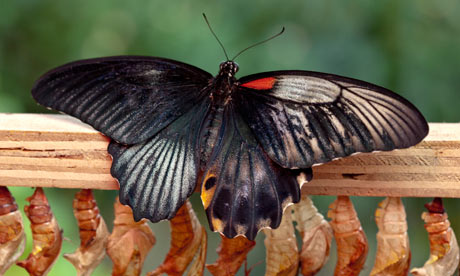
One little thing tripped my skeptical sensors and that is the quote at the end of the article taken from the curator of butterflies, Blanca Huertas. “The gynandromorph butterfly is a fascinating scientific phenomenon, and is the product of complex evolutionary processes. It is fantastic to have discovered one hatching on museum grounds, particularly as they are so rare.”
Добре, I don’t specifically see how these are a “product of … evolutionary processes” inasmuch as всі life in всі forms is a product of evolution. These are sterile “glitches” that are cool, but not anything that has been specifically evolved for or against. Perhaps it would be more adept to call this a fascinating process of genetics (which the article actually describes with accuracy). Також – butterflies emerge as adults and hatch as caterpillars – but that’s just me being picky.
Кріс Grinter, 11 липня, 2011 Сьогоднішній молі є красивим і рідкісні види від SE Арізоні і Мексиці: Lerina втілені (Erebidae: Arctiinae). Як і багато інших день літати видів вона яскравими і цілком імовірно aposematic. Адже, рослина-господар є молочаю і гусениця так же приголомшливий (нижче).
 Lerina втілені (Erebidae: Arctiinae)
This image of an old, spread specimen hardly does the animal justice, but one lucky photographer found a female ovipositing at the very top of a hill outside of Tucson, Арізона. While you’re at it go check out some of Philip’s other great photographs on SmugMug.
 Lerina втілені - Philip Kline, BugGuide As I mentioned above this moth also has an equally impressive caterpillar that feeds on Ascleapias linaria (pineneedle milkweed).
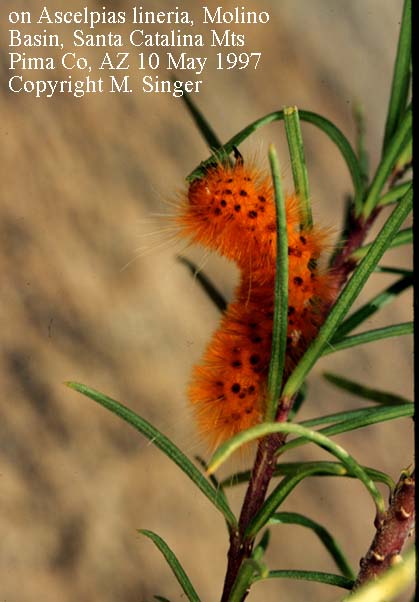
Кріс Grinter, 5 липня, 2011 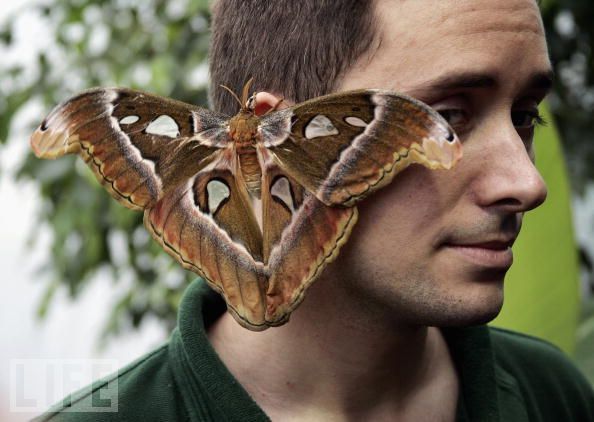
Схоже, є переважання міських легенд, які пов'язані комахи повзають в наші обличчя, поки ми спимо. Найвідоміший міф це те уздовж ліній “ви їсте 8 павуки рік під час сну“. Насправді, коли ви Google, що число коливається від 4 з 8… до фунта? Не дивно, що в Інтернеті все так перебільшено, особливо коли це стосується дуже популярної арахнофобії. Я сумніваюся, що середній американець з’їдає більше, ніж кілька павуків за все своє життя; у вашому домі просто не повинно бути так багато павуків, щоб вони щовечора потрапляли у ваш рот! Подібний міф все ще є міфом, але з зерном істини – що вуха вночі зариваються у ваш мозок, щоб відкласти яйця. Це неправда, що уховертки є людськими паразитами (на щастя), але вони мають схильність залізти в тісний, вологі місця. Можливо, це було досить частим явищем у Ви, Стара Англія що вушковертка отримала це горезвісне ім'я. Було також задокументовано, що таргани є вухами – але будь-яка повзуча комаха, яка може ходити на нас вночі, ймовірно, може опинитися в одному з наших отворів.
Проте я ніколи не чув, щоб міль залізла у вухо, поки не натрапила ця історія сьогодні! Мабуть, розгублений Ноктуїд якимось чином потрапив у вухо цього хлопчика, хоча я не можу не задатися питанням, чи він сам це поклав… Мотилі зазвичай не сідають на людей, коли вони сплять, і вони не схильні виявляти вологу, тісні місця. Але знову ж таки все можливо, деякі ноктуїди вдень залазять під кору або листя, щоб безпечно сховатися. Я навіть натрапив інша історія вушної молі з Великобританії (не те, що Daily Mail є авторитетним джерелом).
Природно, деякі ледачі джерела новин використання фотографій файлів “молі” замість копіювання фотографії з оригінальної історії. Це дуже смішно, тому що на одній із використаних фотографій зображено новий вид молі минулого року Брюс Уолш в Арізоні. Lithophane leeae було представлено в моєму блозі двічі раніше, але ніколи так!
На завершення ось вірш Роберта Кордінга (також де зображено вище був знайдений).
Враховуйте це: міль залітає чоловікові у вухо
Один звичайний вечір непомітних насолод.
Коли міль б'є крилами, всі вітри
Зібрати землю в його вухо, ревуть як нічого
Він коли-небудь чув. Він трусить і трясе
Його голова, його дружина глибоко копає йому вухо
З Q-Tip, але гуркіт не вщухне.
Здається, ніби всі двері і вікна
З його хати враз здуло —
Дивна гра обставин, над якими
Він ніколи не контролював, але які він міг ігнорувати
Аж до вечора зник, як ніби
Ніколи цим не жила. Його тіла вже немає
Здається своїм; він кричить від болю, щоб потонути
Вітер у його вусі, і проклинає Бога,
ВООЗ, годин тому, було доброякісним узагальненням
У світі, який живе досить добре.
По дорозі в лікарню, його дружина зупиняється
Машина, каже чоловікові вийти,
Сидіти в траві. Немає автомобільних фар,
Ніяких вуличних ліхтарів, немає місяця. Вона бере
Ліхтарик з бардачка
І тримає його біля вуха і, неймовірно,
Мотиль летить назустріч світлу. Його очі
Є вологі. Він відчуває себе так, ніби раптом став паломником
На березі несподіваного світу.
Коли він лягає спиною в траву, він хлопчик
Знову. Його дружина світить ліхтариком
У небо і там тільки тиша
Він ніколи не чув, і маленька дорога
Світла, що йде туди, де він ніколи не був.
– Роберт Кордінг, Спільне життя: Вірші (Форт Лі: CavanKerry Press, 2006), 29–30.
Кріс Grinter, 30 червня, 2011 
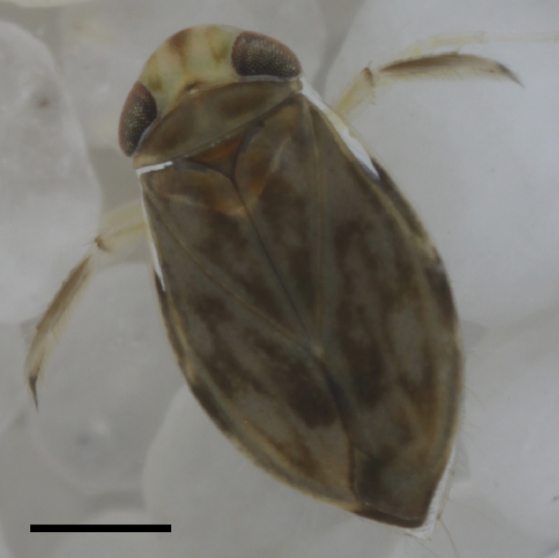 Micronecta Шольц Пагорби Європейського місцевості живі в хорі влюблива, кричати, чоловіки водні помилки. Маленька комаха вище, Micronecta Шольц (Corixidae), measures in at a whopping 2.3mm and yet produces a clicking/buzzing sound easily audible to the human ear above the water surface. Щоб помістити це в перспективу: trying to hear someone talk underwater while standing poolside is nearly impossible, yet this minute insect generates a click loud enough to be mistaken for a terrestrial arthropod. While that doesn’t sound too impressive when we are surrounded by other loud insects like the cicada, М. scholtzi turns out to be a stunningly loud animal when you take into consideration the body size and medium the sound is propagating through to reach our ear. Put into numbers the intensity of the clicks underwater can reach up to 100 dB (Sound Pressure Level, SPL). Shrink us into the insect world and this sound production is equal to a jackhammer at the same distance! So what on earth has allowed this little bug to make this noise and get away with it in a world full of predators?
The authors naturally point out how surprising these results are. The first thing that becomes apparent is that the water boatmen must have no auditory predators since they are basically swimming around making the most noise physically possible for any small animal anywhere. Really this isn’t too surprising since most underwater predators are strictly visual hunters (dragonfly larvae, water bugs and beetles etc…). It is very likely that sexual selection has guided the development of these stridulatory calls into such astounding levels. The second most surprising thing is clear once you graph just how loud these insects are relative to their body size. At the top of the graph is the bottlenose dolphin (T. truncatus) with its famous sonar. But the greatest outlier is actually our little insect in the bottom left with the very highest ratio between sound and body size (31.5 with a mean of 6.9). No other known animal comes close. It is likely though that further examination of other aquatic insects may yield similar if not more surprising results!
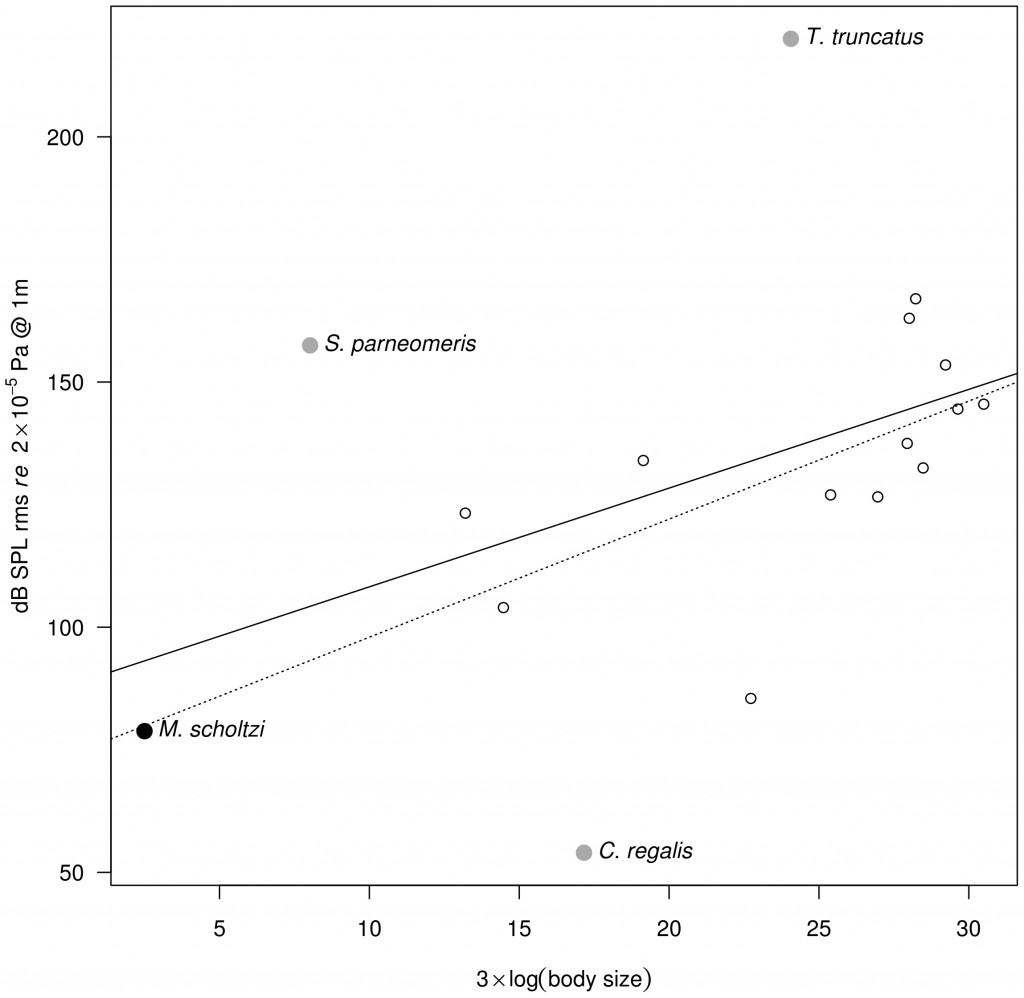
To be more accurate about the “кричати”, the bugs (bugs in this instance is correct; the Corixidae belong to the order Hemiptera – the true bugs) are likely to be stridulating – rubbing together two parts to generate sound instead of exhaling air, drumming, і т.д.… In the article the authors speculate that the “sound is produced by rubbing a pars stridens on the right paramere (genitalia appendage) against a ridge on the left lobe of the eighth abdominal segment [15]”. Without pulling up their citation, it appears that stridulation by males in the genus is well documented for mate attraction. And as you would expect, news outlets and science journalists read “genitalia appendage” and translate that to penis: and you end up with stories like this. The function of the parameres can be loosely translated to similar to mandibles in that they are opposing structures (usually armed with hairs) for grasping. The exact use of them may differ by species or even orders, but they are very distinct form the penis (=aedeagus) since they simply help facilitate mating and don’t deliver any sperm. So in reality you have genital “claspers” with a “pars stridens”. And the best illustration of a pars stridens is over on the old blog Archetype. This structure is highlighted below in yellow (and happens to exist on the abdomen of the ant). Але в короткостроковій – it’s a regular grooved surface akin to a washboard. In the end the sentence quoted above should be translated to “two structures at the tip of the abdomen that rub together like two fingers snapping”.
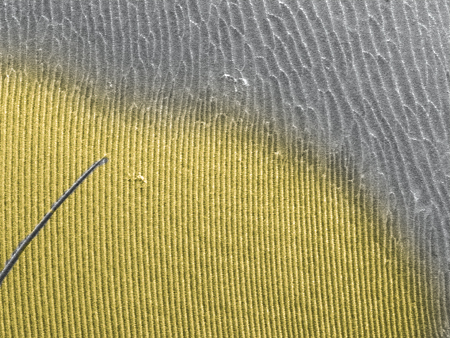 Detail of the pars stridens (in yellow) on the forth abdominal tergite in a Pachycondyla villosa worker (Scanning Electron Micrograph, Roberto Keller/AMNH) Continue reading The incredibly loud world of bug sex
Кріс Grinter, on June 20th, 2011 I’m going to keep the ball rolling with this series and try to make it more regular. I will also focus on highlighting a new species each week from the massive collections here at the California Academy of Sciences. This should give me enough material for… at least a few hundred years.
 Grammia edwardsii (Erebidae: Arctiinae) This week’s specimen is the tiger moth Grammia edwardsii. Up until a few years ago this family of moths was considered separate from the Noctuidae – but recent molecular and morphological analysis shows that it is in fact a Noctuid. The family Erebidae was pulled out from within the Noctuidae and the Arctiidae were placed therein, turning them into the subfamily Arctiinae. OK boring taxonomy out of the way – all in all, it’s a beautiful moth and almost nothing is known about it. This specimen was collected in San Francisco in 1904 – in fact almost all specimens known of this species were collected in the city around the turn of the century. While this moth looks very similar to the abundant and widespread Grammia ornata, close analysis of the eyes, wing shape and antennae maintain that this is actually a separate species. I believe the last specimen was collected around the 1920’s and it hasn’t been seen since. It is likely and unfortunate that this moth may have become extinct over the course of the last 100 years of development of the SF Bay region. Grammia, and Arctiinae in general, are not known for high levels of host specificity; they tend to be like little cows and feed on almost anything in their path. So it remains puzzling why this moth wouldn’t have habitat today, even in a city so heavily disturbed. Perhaps this moth specialized in the salt marsh areas surrounding the bay – which have all since been wiped out due to landfill for real-estate (1/3 of the entire bay was lost to fill). Or perhaps this moth remains with us even today but is never collected because it is an evasive day flying species. I always keep my eye out in the park in spring for a small orange blur…
|
Скептицизм
|














